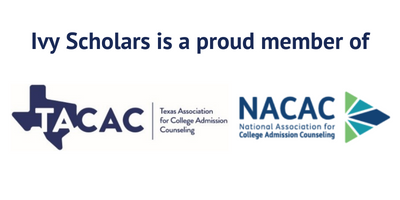Internships are a popular way for high school students to gain experience in any number of fields, from research to medicine to business. This lets you explore potential careers and majors, and also looks quite impressive when you’re applying to colleges, especially for internships that really let you make an impact at the organization you’re working with.
Most internships happen during the summer, when students have a lot more free time. Some, however, continue into the school year, or happen then primarily. These have different challenges, but also often offer unique rewards. In this article, we’re going to look at how these internships work, and give some examples of school-year internships our students have taken part in in the past. Let’s get started!
How School Year Internships Work
In many ways school year internships work just like those during the summer, but there are some logistical changes, due mostly to students being in school. Since you are in school during normal working hours, many internships simply don’t operate; businesses may love your enthusiasm, but workers rarely want to stay past five. Similarly, many don’t work on weekends.
In addition, the number of hours you can devote is significantly curtailed. While some internships ask for 40 hours a week during the summer, 10 per week is the norm for the school year. You simply have many more demands on your time, and school work needs to come first.
Here’s a chart to more fully compare school year and summer internships:
| Summer Internships | Both | School Year Internships |
| Can require up to 40 hours per week | Require you to take time commitments seriously | Require around 10 hours per week |
| Happen during the normal work day | Have you doing real work | Happen in afternoons, weekends, or asynchronously |
| Are a shorter, set duration | Require an application | Can be extended for a long period |
School year internships are not inherently better or worse than ones offered during the summer, but they offer different benefits, and add to your candidacy in different ways. The biggest boost is the long-term commitment; colleges love to see your ability to commit to something long-term, and interning for the same organization for a full year (or even more) definitely does that.
Asynchronous Internships
A brief note on this, as it is quite common for school year internships. For these, you are doing work for an organization, but it is done remotely and on your own schedule. You will meet with a supervisor once a week to discuss assignments and the work they want you to focus on, and then you will mostly be left to your own devices to complete it.
This has the advantage of flexibility in scheduling, allowing you to complete internships even in the face of schoolwork and other extracurriculars. It does, however, require a significant degree of maturity on your part, as you need to be responsible for budgeting and scheduling your own time, and getting work done without constant supervision.
Finding School Year Internships
In the next section, we’ll go over a number of options for school-year internships. First, however, we want to give general advice on how to find these internships in the first place; we can’t cover every example, and there are likely some excellent ones near you just waiting to be uncovered.
The simplest way to enter a school year internship is to begin a summer internship, then find a way to extend that. Some programs have set pathways to do this, others may be amenable to it, especially if you wow them during the summer. This has the benefit that summer internships are much more common, and once you know the people at an organization, they are more likely to want to keep you around for longer.
The other approach is the same way to find any other internship; begin by working your network; options available through your school, the people your parents know, and any businesses or organizations you have connections with. For more advice on how to pursue and approach internship opportunities, see our article here.
School Year Internship Opportunities
This isn’t going to be a full examination of every school year internship; many organizations do not have set internships, but may make an exception for a particularly bright and talented student. This is a list of interesting options, and gives you a sense of what options are out there when you go looking for these internships.
Bureau of Land Management Internships
These, and other government internships, are currently on pause, but are a great option for students with an interest in public service or specific fields that are otherwise difficult to get a start in in high school. These are competitive positions, and all government internships require you to be at least 16 or older and enrolled full time.
These internships are intended primarily for college students, but high schoolers who are eligible may apply. Note that these are all in-person internships, and require that you live close to wherever the work is happening. This severely limits availability for some students; many governmental internships are only feasible for students who live in the DC area.
These are paid internships, generally paying federal minimum wage. Your duties will vary a lot by department and location, but you will learn a lot working for the government, and the experience is quite valuable.
EnergyMag Virtual Internship
This is an internship offered by a non-profit, and is a virtual asynchronous internship; that is, it doesn’t matter where in the country you are, all you need is a stable internet connection. These are limited duration internships, offered at half or quarter time. Half-time internships are only available during the summer, and expect 20 hours of work a week for two to eight weeks. Quarter time internships expect eight hours of work per week, and last for one to nine months.
These internships are open to both high school and college students. The internships generally consist of having students research various entities in the field of green or renewable energy. Students will be directly mentored during their internships, overseen one-to-one by an employee of EnergyMag. This isn’t micromanaging; their goal is to make sure that all of your questions are answered and you are able to do the work well and with their full support.
These are unpaid internships; EnergyMag is a nonprofit, and lacks the funds needed to make these paid positions. Applications may be submitted directly through their site; you must be at least a sophomore with a GPA above 3.25 in order to qualify, and have taken at least one honors English or science course. Applications are accepted on a rolling basis.
Metropolitan Museum Internships
The Metropolitan Museum in New York City is one of the world’s premier art museums, and they offer internship opportunities to both college and high school students. These are part-time 10 week internships, and occur both in the summer, and during the school year.
These are paid internships, and take place in-person. For this reason, they are only feasible for students who live in New York City. You must be in 10th or 11th grades, and either enrolled in high school or homeschooled to take part in one of these internships. Applications must be submitted online, and are due well in advance; the spring internship’s application is due in October.
As an intern you will learn about both art and curation, while helping the Met with its mission of disseminating art to the public. This is an ideal program for students interested in art, art history, or museums generally. You will have varied responsibilities as an intern, working in all aspects of the Met and its collections.
US Senate Page Program
Run by the US Senate (as you might expect), this program offers both summer and semester opportunities for high school students aged 16 to 17 to work in the US capitol. You must be a US citizen or permanent resident, and must have a minimum cumulative GPA of 3.0 to apply.
Applications are handled by individual senators; not all senators take on pages through this program, and how each does so depends on their own office. There are 30 page positions; which senators get to appoint them rotates. Pages stay at the capitol and attend a special school there during the school year, while also carrying out their duties. Pages are held to a very high ethical standard.
Pages are paid, and serve for less than a year; housing is provided as part of the program, and students do not need to pay for this. This is a very prestigious and very competitive program.
Final Thoughts
This is only a taste of the internship opportunities available to high school students, but does highlight just how many options are out there. There are fewer than you can find during the summer, but it certainly is an option, one which more students should consider availing themselves of. Colleges want to see how you have pursued your passions over the long term, and an internship like this is perfect for doing so.
If you are looking for help finding and securing one of these internships, then Ivy Scholars can help. We both help students apply to any number of opportunities, and partner directly with a number of firms to arrange exciting internship opportunities for students. Our goal is to help each student find the situation that best helps them explore and elevate their interests. If you’re interested in working with us, then schedule a free consultation today; we’re always happy to hear from you.








